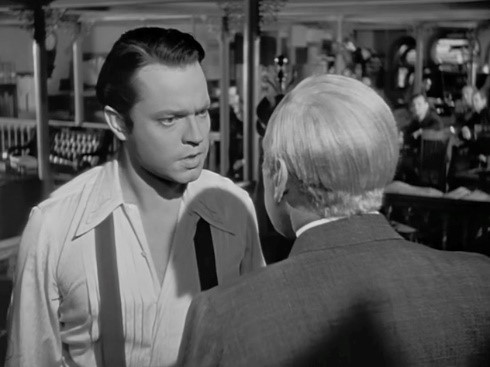Welcome to Matrix Education
To ensure we are showing you the most relevant content, please select your location below.
Select a year to see courses
Learn online or on-campus during the term or school holidays
Learn online or on-campus during the term or school holidays
Learn online or on-campus during the term or school holidays
Learn online or on-campus during the term or school holidays
Learn online or on-campus during the term or school holidays
Learn online or on-campus during the term or school holidays
Learn online or on-campus during the term or school holidays
Get HSC Trial exam ready in just a week
Get HSC exam ready in just a week
Select a year to see available courses
Science guides to help you get ahead
Science guides to help you get ahead
Who was Charles Foster Kane? In this post, we give you give you character analysis of Kane and his peers.

Join 75,893 students who already have a head start.
"*" indicates required fields
Related courses

Join 8000+ students each term who already have a head start on their school academic journey.
Stuck on Citizen Kane? Citizen Kane is an unconventional film and one that students find difficult to analyse. In this essential Citizen Kane character guide, we’ll explain the characters, their motivations, and how Orson Welles used them to shape our understanding of the elusive Charles Foster Kane.
Module B requires you to engage in a “close study” of the texts set for study. A “close study” requires you to analyse the text closely and discuss how composers have created meaning in their texts.
As part of this process, you need to assess whether the text holds textual integrity or lasting value and appeal for audiences. An effective way to develop your analysis of a text for Module B is to analyse the characters in the text.
In Citizen Kane, Welles uses a framing narrative – one where Thompson interviewing those who knew Kane. This means that the perspective you view the characters through can be ambiguous. But this ambiguity is what makes understanding these characters essential to discussing the text for Module B.
Ambiguity and irony are considered hallmarks of canonical or important texts. And Citizen Kane is a narrative full of both, and the titular protagonist is the most ambiguous character of all.
To help you get to grips with these characters, let’s have a look at them one by one.
Jerry Thompson is the reporter sent to learn about Kane and to uncover the meaning of his last word – “Rosebud.” This is the mystery that drives the narrative. We only glimpse Thompson’s face in two shots.
The first is when he is introduced in the screening room and sent to research Kane.
The second is when he is talking to Kane’s butler, Raymond, at the end of the film.
For the rest of the film, Thompson is framed with over-the-shoulder (OTS) shots.
Why do this?
This approach involves the audience in his search for answers. We see things from close to, but not exactly his perspective.
Thompson is, therefore, a surrogate for the viewer. As he searches for answers, so do we. The difficulties he faces in ascertaining Kane’s true character are your frustrations, too!
Thatcher was Kane’s guardian and steward of his trust.
Aside from a small scene in “News on the March,” we don’t hear Thatcher’s account of Kane directly. It is largely presented by Thompson’s reading of his memoirs.
There is a giant statue of Thatcher in the building’s foyer. This symbol of reputation gives the audience an origin for Kane’s sense of grandiosity and ego, it matches the giant painting of Kane that Bernstein keeps in his office.
Thatcher and Kane are presented as adversarial from their first meeting when Kane pushes Thatcher with his sled.
Thatcher is an austere and conservative individual who is very serious, yet also very proud. He characterises Kane as wasteful, immoral, and unnecessarily difficult.
From Thatcher’s perspective, Kane was an ungrateful child and young man prone to excesses and who made life difficult for his guardian by attacking trust funds. These attacks are ironic as Kane’s wealth comes from the trust managed by Thatcher.
Later, they argue in the office of the Inquirer over Kane’s articles and financial management of the paper. The use of depth-of-field and mis-en-scene, here, allow Welles to convey the shifting power between the two men. Initially, Kane shrinks away from Thatcher, then later towers over him.
 |
Leland was Kane’s best friend. But as Kane aged and wavered on his principles they began to fall out.
Leland is a very moral individual, and he is upset by Kane’s willingness to abandon his principles. When Thompson visits Leland he is an old man in a nursing home. He laments not trying to repair the fractured relationship he had with Kane.
The relationship between Leland and Kane is embodied by the “Declaration of Principles” that Kane writes up after purchasing the Inquirer. The declaration first appears when Bernstein, Leland, and Kane are assembling the first issue of the paper after Kane’s acquisition of it.
In this scene, Bernstein remarks that “You don’t want to make any promises, Mr Kane, that you don’t want to keep.”
During the scene, Kane’s face is often in shadow – making it impossible to judge his sincerity.
While in contrast, Leland addresses the camera directly, breaking the fourth wall, and remarks it “might turn out to be something pretty important…. Like the declaration of independence.” This foreshadows both the breakdown of their relationship and the moral turpitude that results from Kane’s obsession with reputation.
Subsequently, after Kane’s failed attempt at running for Governor, Leland addresses Kane’s lack of morality and his habit of placing ego before the common good.
Finally, when Kane has tried to bribe Leland to write a good account of Susan’s opera performance, Leland mails him the declaration back – torn into pieces. This is symbolic of the destruction of their friendship and Kane’s inability to stick to his principles.
Ironically, after Kane receives the shredded declaration he sends Susan back on to the stage. A selfish act that attempts to protect his own reputation and not hers, proving Leland correct.
Kane’s first wife is the niece of the President of the United States.
Their relationship sours quickly. Emily disapproves of both his engagement with the paper and its tenuous relationship with the truth. She is critical of Kane’s desire to manipulate public opinion through the paper.
Emily accuses Kane of sensationalism and “yellow journalism.”
The entropy of their relationship is conveyed through the breakfast montage.
In the initial shot they are seated next to each other at one end of the table, but as they begin to bicker and resent one another over the years they sit at either end of the table.
At the end of the scene, the camera pans to the centre and tracks back to reveal that they sit at either end of a much larger table: they have literally grown apart.
Susan is Kane’s second wife.
When Thomson approaches her, she is a failed singer and successful alcoholic. She initially refuses an interview, but later acquiesces.
She is characterised as an unsophisticated and naive young woman who was infatuated by Kane’s sense of humour and not his wealth.
After Kane loses the election to Gettys (because of their affair), he pressures her into an opera career. While she likes to sing, she is not talented at it, and only pursues it because of Kane’s insistence.
This characterises Kane as an abusive husband projecting his desires and reputation onto his wife.
Susan’s opera career is a flop; she is ridiculed for her performances. Kane only allows her to stop after she attempts suicide and he realises what he has done.
Kane consistently dominates their relationship, putting his own interests first. For example, When he is confronted by Gettys and Emily Kane about their affair, he is more concerned about his election campaign and not the potential damage to Emily’s or Susan’s reputation.
His refusal to cede to Gettys is not driven by nobility but his own pride. At no point in the exchange does he stand up for Susan, and he makes the scene about himself rather than her.
Kane’s selfishness in their relationship is epitomised in the scene the morning after her opening performance.
She begs Kane to let her stop singing. She argues that her reputation is in tatters and that she doesn’t want to perform anymore. The mise-en-scene has Kane standing in front of the fireplace while she kneels on the floor amidst a number of newspapers featuring negative reviews about her.
Kane refuses to let her stop and tells her that he doesn’t want to be a “laughing stock.”
To convey the menace of this scene, Welles uses a low shot, looking up at Kane, to illustrate his domineering nature and abuse of his power in their relationship.
His abusive and childish nature is ultimately unveiled in his destruction of Susan’s room after she leaves him. His stilted movements and untempered rage evoke his childhood attack on Thatcher.
Welles presents Kane as an enigma.
Because of the vignettes that represent him, we don’t see all of Kane. Welles only allows us small slivers of his personality and his life.
Welles represents Kane’s contradictory personality and opaque motivations through recurring motifs and shots. The most prominent is chiaroscuro lighting. Kane is often captured wholly or partially in silhouette.
By restricting our ability to see Kane, Welles is symbolising the difficulty in knowing who he is.
Kane constantly craves power, success, and authority.
Welles often uses sequences where Kane shifts from being the smaller figure in the scene, to the larger. This is done through a combination of mis-en-scene, tracking shots, and depth-of-field.
This is a compositional motif of his relationships with Thatcher, Leland, and Susan. Kane’s proclivity to tower over those he argues with presents him as a domineering man and a bully.
This is a characteristic at odds with his desire to be liked.
The final shot of Kane, as he walks past a pair of mirrors and his reflections disappear into the distance, embodies the difficulty of defining or knowing Kane.
This scene utilises a technique known as mise-en-abyme – that literally means “into the abyss.”
It represents that there is no singular Kane that can be understood from these vignettes. Amongst these perspectives of Kane, it is impossible to discern the authentic Kane from the public facades. Thus, the irony of the shot lies in how Kane glances into the mirror to regard himself briefly. It argues that Kane is unsure who he is, too.
Do you feel like you know who Kane is now?
How exam ready for HSC Paper 1 and Paper 2 are you? Our Matrix English course will get you across the requirements of each Module and teach you how to write Band-6 essays for each so you can ace your exams!
In these sessions, you will:
Start HSC English confidently
Expert teachers, detailed feedback, one-to-one help! Learn from home with Matrix+ Online English courses.
Written by Matrix English Team
The Matrix English Team are tutors and teachers with a passion for English and a dedication to seeing Matrix Students achieving their academic goals.© Matrix Education and www.matrix.edu.au, 2025. Unauthorised use and/or duplication of this material without express and written permission from this site’s author and/or owner is strictly prohibited. Excerpts and links may be used, provided that full and clear credit is given to Matrix Education and www.matrix.edu.au with appropriate and specific direction to the original content.